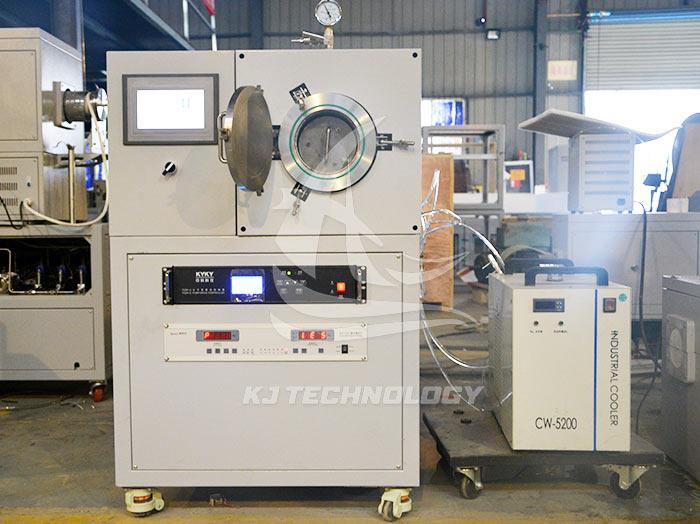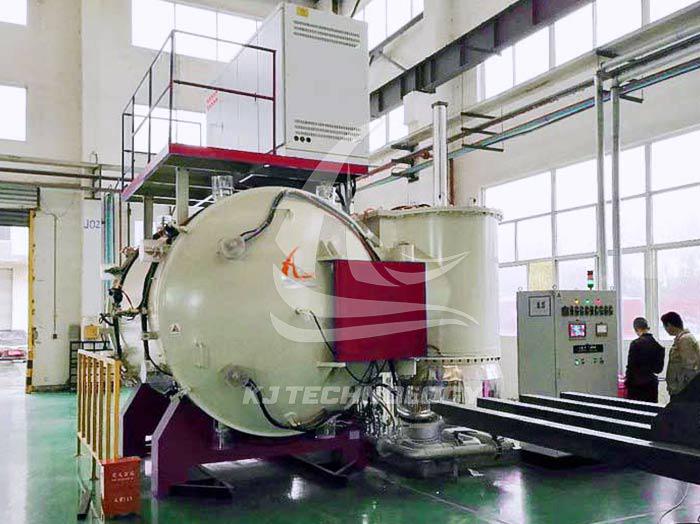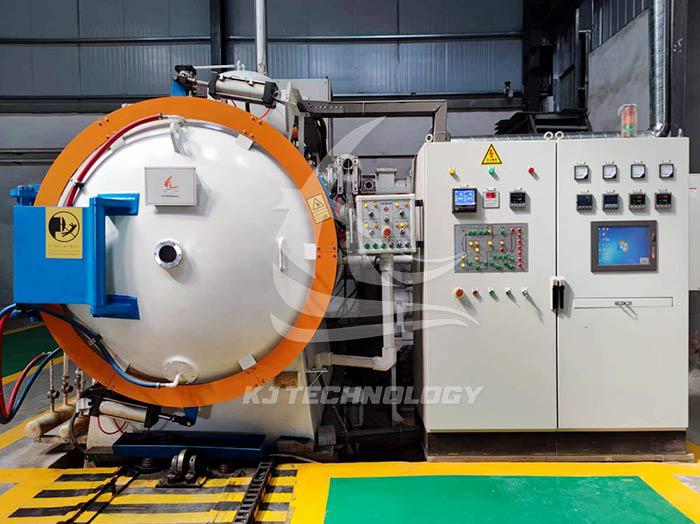Vacuum degreasing furnace
 08-22-2025 Author: KJ technology
08-22-2025 Author: KJ technology
Vacuum degreasing furnace: in-depth analysis of technical principles, functional characteristics, and industry applications
1. Technical principle: Efficient degreasing mechanism under vacuum environment
The vacuum degreasing furnace reduces the boiling point of organic matter through a low-pressure environment, combined with gradient heating control, to achieve complete removal of binders (such as paraffin, PEG, rubber, etc.) from metal or ceramic bodies. The core process is divided into two stages:
Degreasing stage
The vacuum degree is achieved through the combination of mechanical pumps and diffusion pumps to create a high vacuum environment.
The heating rate is strictly controlled to avoid rapid volatilization of the binder, which may cause cracking of the billet. For example, metal injection molding (MIM) blanks require slow heating in the low temperature range of 150-350 ℃ to ensure uniform evaporation of the binder.
The carrier gas (such as nitrogen) carries vapor wax to the wax capture tank, and efficient capture is achieved through the arc-shaped design of the condenser tube and the sleeve cooling system, avoiding contamination of the vacuum pump.
Cleaning stage
Alternating filling of protective gas creates pressure pulses, and residual adhesive inside the billet is removed through infiltration suction cycles.
Repeated cleaning can improve the degreasing rate and ensure the density and dimensional accuracy of the billet.
2. Functional features: Modular design and intelligent control
Multi mode degreasing process
Supports various modes such as negative pressure vacuum degreasing (suitable for paraffin based adhesives), argon carrier gas degreasing (to prevent oxidation), hydrogen positive pressure degreasing (reducing atmosphere protection), etc.
Some high-end models (such as vacuum degreasing sintering furnaces) integrate three-stage vacuum pipelines (primary, secondary, and main pump stages), and the system pressure can be stably maintained to meet high-precision degreasing requirements.
Accurate control of temperature and atmosphere
Heating is achieved using graphite or silicon carbide rods, with a maximum temperature of 1600 ℃. Combined with three independent heating devices and an automatic temperature control system, the temperature uniformity is better.
Supports various atmosphere controls such as vacuum, argon, hydrogen, etc., compatible with vacuum sintering, partial pressure sintering, and micro positive pressure sintering processes.
Safety and Environmental Design
Equipped with mechanical automatic pressure protection, over temperature and over pressure alarm, action interlock and other safety functions.
The exhaust gas treatment system (such as high-temperature cracking unit) can burn out harmful gases such as formaldehyde, which meets environmental protection requirements.
Intelligent operation
Adopting touch screen+PLC centralized control, supporting remote operation, fault diagnosis and software upgrade.
The data recording function (such as paperless recorder) can trace process parameters and optimize production processes.
3. Industry application: Full chain coverage from powder metallurgy to advanced ceramics
Powder metallurgy field
MIM parts production: used for integrated degreasing and sintering treatment of iron-based, stainless steel, hard alloy and other materials to improve part density and magnetic properties.
Squeezing rods and molded products: Efficient loading and unloading can be achieved through roller or forklift type material trucks, suitable for mass production.
Ceramics and Composite Materials
Oxide ceramics: Under a vacuum degree of 1 × 10 ³ to 1 × 10 ⁴ Pa, combined with the heating rate, to avoid cracking of ceramic green bodies such as alumina and silicon nitride during degreasing.
Metal/ceramic composite materials: support integrated processes of brazing, degassing, and sintering to enhance material bonding strength.
Special material processing
High temperature alloys and magnetic materials, such as Sm Co, Nd Fe and other magnetic materials, can improve their magnetic properties by vacuum degreasing to avoid oxidation.
Carbides and borides: Used for pre-treatment of high-density alloys, metal ceramics, and other materials to ensure sintering quality.
4. Selection suggestion: Customize solutions according to process requirements
Temperature and size requirements
The maximum temperature of conventional models is 1200-1500 ℃, while high vacuum models can reach 1600 ℃.
The effective workspace size ranges from 150 × 150 × 200 mm to customized large furnace bodies to meet different batch production needs.
Function extension options
Exhaust gas treatment module: high-temperature cracking device, exhaust gas incineration system, suitable for catalytic degreasing process (such as formaldehyde resin binder).
Rapid cooling system: The combination of water-cooled door design and furnace opening and closing structure enables rapid cooling from 1200 ℃ to room temperature for 2 hours, improving experimental efficiency.








